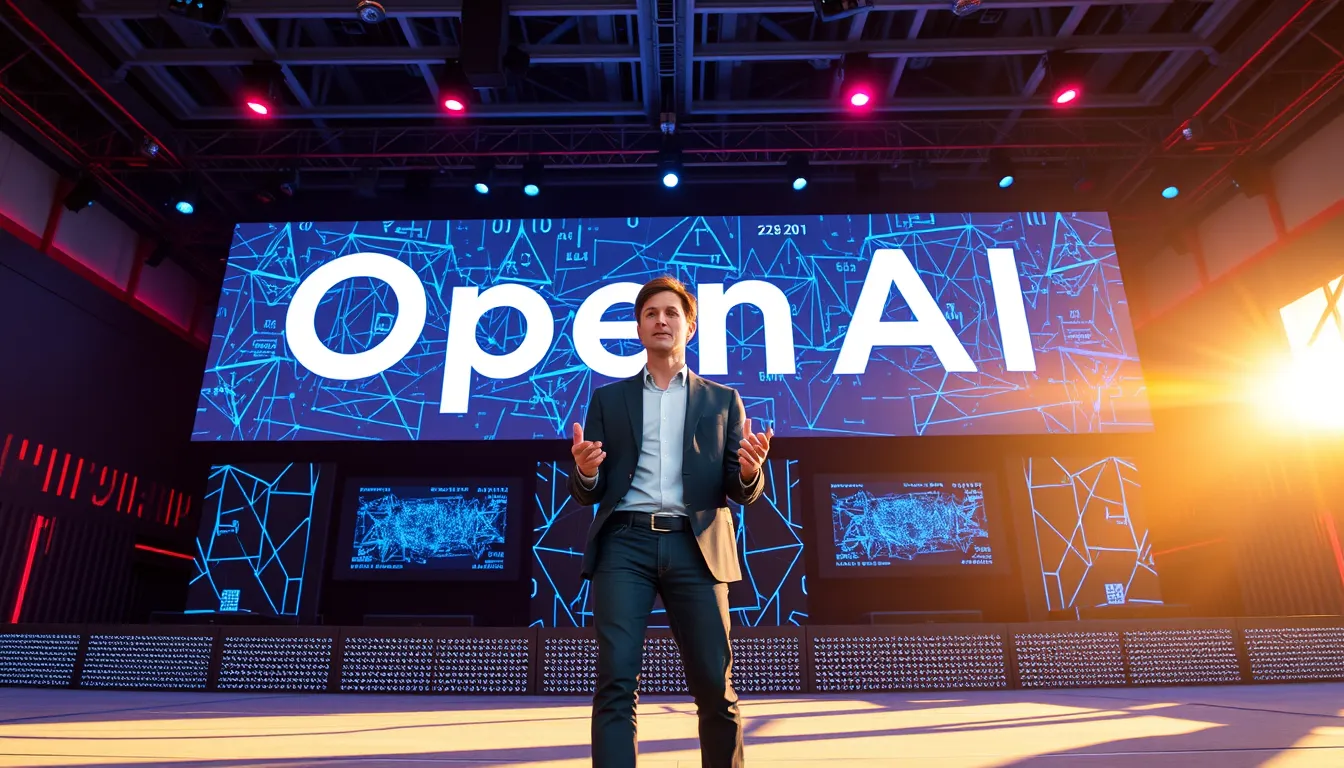Now Reading: Generative AI: Driving Enterprise Success & Spending Trends
-
01
Generative AI: Driving Enterprise Success & Spending Trends
Generative AI: Driving Enterprise Success & Spending Trends

Generative AI: Driving Enterprise Success & Spending Trends
Introduction
Generative AI is rapidly reshaping the enterprise landscape and driving unprecedented changes in IT spending and digital transformation. As organizations increasingly integrate innovative AI solutions into their core strategies, this transformative technology is proving not only to be a glimpse into the future but an essential factor for success in today’s competitive market. Enterprises that harness the capabilities of generative AI are experiencing enhanced operational efficiencies, improved customer personalization, and more agile decision-making processes. This article delves into how generative AI is fueling enterprise success, examines detailed forecasts on tech spending, and outlines strategic guidelines to navigate the digital transformation journey.
The enterprise sector has always been at the forefront of adopting new technologies. With the advent of generative AI, businesses are now able to leverage advanced machine learning models that can create data-driven insights, generate content, and even design complex systems autonomously. The impact spans across various industries – from finance and healthcare to manufacturing and retail – each benefiting from improved productivity and reduced operational overhead. As we explore the emerging trends, it becomes clear that generative AI is not just another technology buzzword; it is a strategic imperative that will define the future of enterprise IT.
Forecast for gen AI Spending 2025
Recent market analyses predict that generative AI spending will witness an exponential increase by 2025. This projection is fueled by several critical factors that underline the urgency for enterprises to reallocate resources and prioritize investments in cutting-edge AI solutions. The forecast suggests a significant surge in investment, making it imperative for IT leaders to understand the dynamics of this shift. Key insights from these forecasts include:
- A staggering investment outlook for 2025, where budgets are increasingly expected to be directed towards generative AI technologies.
- An imperative for IT leaders to adapt rapidly to disruptive technologies and integrate them into traditional business models.
- Enhanced operational efficiencies and improved customer personalization through the adoption of AI-powered analytics and automation tools.
This surge in spending is driven by the potential return on investment offered by AI-enhanced processes. Companies are finding that by automating routine tasks and using AI-generated insights, they not only reduce costs but also create a competitive edge in their respective markets. The rapid pace of innovation in generative AI provides organizations with tools that can simulate human creativity and strategic decision-making, which is now being recognized as a crucial asset for long-term success.
Moreover, market experts believe that this explosion in spending will lead to a more aggressive adoption timeline, where early adopters of generative AI will gain substantial advantages over their competitors. The increased allocation of budgets towards these technologies is likely to drive further innovation, resulting in more efficient and tailored solutions for industry-specific challenges. These trends underscore the necessity of forward-thinking investment strategies and the need for enterprises to be agile in the face of technological disruption.
Strategies for AI-Driven Digital Transformation
To capitalize on the transformative potential of generative AI, enterprises must embrace a series of strategic initiatives. Digital transformation is not simply about integrating new technologies but about reinventing business processes to create value and competitive differentiation. Here are several recommended strategies to effectively leverage generative AI for digital transformation:
- Implement Agile Methodologies: Embracing agile frameworks allows organizations to quickly adapt to rapid technological changes. Agile practices facilitate iterative development, enabling teams to experiment with AI models and integrate feedback at a rapid pace. By breaking down projects into manageable phases, companies can quickly apply learnings from early deployments to refine broader strategies.
- Invest in Training and Skill Development: The success of AI initiatives relies heavily on the expertise of the teams executing them. Investment in comprehensive training programs is crucial to empower IT leadership and frontline employees alike. These programs should cover technical aspects of AI, as well as best practices in ethical AI governance, ensuring that the workforce is well-equipped to handle the complexities of generative AI integration.
- Collaborate with Specialized Vendors: Partnering with external experts and specialized vendors can significantly streamline the incorporation of generative AI. Such collaborations bring in advanced technical capabilities and innovative solutions that might not be available internally. Vendors with a deep understanding of AI governance, cybersecurity, and scalable implementation can help mitigate risks and optimize outcomes.
- Focus on Integrated Data Strategies: At the core of any successful AI initiative is high-quality data. Enterprises should prioritize establishing integrated data strategies that enhance data collection, cleansing, and storage processes. This ensures that AI models have access to reliable data, thereby increasing the accuracy and usefulness of the outputs. A robust data strategy forms the backbone of predictive analytics and personalized customer experiences.
- Adopt a Customer-Centric Approach: Generative AI offers remarkable capabilities for personalization and customer engagement. Enterprises should design their digital transformation strategies with the end-user in mind. This involves understanding customer behavior through data analytics and leveraging AI to provide tailored experiences that improve customer satisfaction and loyalty.
By following these guidelines, enterprises can create an ecosystem where generative AI is not only a tool for efficiency but also a catalyst for innovative business models. The strategic implementation of AI requires a holistic approach where technology, people, and processes are seamlessly integrated to foster continuous improvement and growth.
Building Governance for Generative AI
While the potential of generative AI is undeniable, its successful deployment requires robust governance frameworks. Governance in this context involves establishing policies and procedures that ensure the ethical, secure, and effective use of AI technologies. As organizations integrate generative AI into their operations, several key governance considerations should be prioritized:
- Establishing Ethical Frameworks: Ethical AI use is paramount as businesses navigate issues such as data privacy, bias mitigation, and transparency. Enterprises must develop guidelines that not only comply with current regulations but also anticipate future ethical challenges. This includes creating review boards, establishing accountability mechanisms, and ensuring that all AI-driven decisions are explainable to stakeholders.
- Creating Cross-Functional Teams: Effective AI governance requires collaboration across various departments. By establishing cross-functional teams that include IT professionals, legal experts, compliance officers, and business strategists, companies can ensure that every aspect of AI deployment is scrutinized from multiple perspectives. This holistic approach helps in identifying potential risks early and facilitates the development of cohesive strategies that are aligned with overall business goals.
- Staying Ahead of Regulatory Changes: The regulatory environment for generative AI is evolving rapidly. It is essential for enterprises to maintain up-to-date knowledge of new policies and standards that may impact their operations. Proactive governance means not only complying with current standards but also preparing for anticipated regulatory shifts. This forward-thinking approach minimizes disruptions and ensures that companies remain compliant as the legal landscape evolves.
- Ensuring Data Security and Privacy: With the increased use of AI comes the heightened risk of cybersecurity threats. Enterprises must invest in robust data security measures that protect sensitive information. This includes implementing multi-layered security protocols, conducting regular vulnerability assessments, and developing incident response strategies to mitigate potential breaches. Secure data governance is critical to maintaining trust among customers and stakeholders.
- Implementing Continuous Monitoring and Evaluation: Governance is not a one-time effort but an ongoing process. Enterprises should establish continuous monitoring systems to evaluate the performance and ethical compliance of AI models in real time. Regular audits and performance assessments help detect any deviations from expected outcomes, allowing for timely corrective actions. This continuous feedback loop is essential for maintaining the integrity and effectiveness of generative AI implementations.
The establishment of a robust governance framework is a cornerstone for fostering trust and ensuring sustainable growth in the adoption of generative AI. By creating ethical guidelines, building cross-functional teams, and remaining agile in response to regulatory changes, enterprises can not only manage risks but also maximize the benefits of AI innovations.
Advanced Considerations in Enterprise IT Spending
As generative AI continues to gain momentum, several advanced considerations come into play regarding enterprise IT spending. These include the integration of new technologies with legacy systems, budget re-allocation for AI initiatives, and the evaluation of long-term return on investments (ROI). Here we explore some of the key financial and strategic factors that enterprises must address:
- Balancing Innovation with Cost Management: Enterprises must strike a delicate balance between investing in breakthrough AI technologies and managing overall IT budgets. While the upfront costs of implementing generative AI solutions can be significant, the long-term savings realized through improved efficiencies and reduced labor costs often justify the initial expenditure. Financial strategists must work closely with IT leadership to map out clear cost-benefit analyses and budget forecasts.
- Leveraging Cloud Infrastructure: The scalability of cloud computing is a major enabler for generative AI. Cloud platforms provide the necessary resources for processing large-scale AI models without the need for significant capital investment in on-premises hardware. This flexibility allows enterprises to experiment with and scale their AI initiatives dynamically, aligning spending with demand and minimizing waste.
- Integrating AI into Existing Enterprise Architectures: One of the challenges in the widespread adoption of generative AI is the integration with existing enterprise architectures. Companies must plan for interoperability between new AI systems and legacy software, ensuring minimal disruption to daily operations. Strategic investments in middleware solutions and API integration can help bridge the gap, allowing for a smoother transition and better overall system performance.
- Evaluating Long-Term ROI and Competitive Advantage: Rather than focusing solely on short-term gains, enterprises should evaluate the long-term ROI of generative AI investments. Metrics such as increased productivity, enhanced customer retention, and reduced error rates play a pivotal role in determining the success of these initiatives. When viewed through the lens of overall competitive advantage, investments in generative AI often yield substantial returns that redefine industry benchmarks.
Case Studies and Industry Examples
To better understand the real-world impact of generative AI, it is useful to consider several case studies where organizations have successfully harnessed this technology to drive enterprise success. For instance, in the financial sector, banks are leveraging generative AI to automate the generation of risk assessments and customer service responses, leading to faster resolution times and more personalized solutions. Similarly, in healthcare, generative AI tools are employed to analyze medical imaging, providing early detection of diseases and facilitating proactive patient care.
In manufacturing, the incorporation of generative AI is revolutionizing product design and supply chain optimization. Companies are using AI to simulate complex manufacturing processes, thereby identifying inefficiencies and reducing costs. These examples underscore the versatility of generative AI and its applicability across diverse industries. They also highlight the importance of strategic investments and robust governance frameworks in ensuring that the adoption of generative AI translates into measurable business benefits.
Conclusion
The evolving landscape of enterprise IT is being fundamentally transformed by generative AI. With robust forecasts predicting dramatic increases in tech spending by 2025, enterprises are urged to rethink their approaches to digital transformation. By implementing agile methodologies, prioritizing skill development, and fostering strategic collaborations with specialized vendors, organizations can fully leverage the capabilities of generative AI.
Moreover, the successful adoption of generative AI goes beyond mere investment. It requires the establishment of comprehensive governance frameworks that address ethical considerations, data security, regulatory compliance, and continuous performance evaluation. By aligning these elements, enterprise IT leaders are poised not only to drive operational success but also to stay ahead in a competitive digital market.
The future belongs to organizations that are proactive, strategic, and ready to harness the transformative power of generative AI. With thoughtful investment strategies, carefully designed AI frameworks, and a relentless focus on innovation, businesses can unlock new opportunities, drive substantial growth, and redefine what it means to be competitive in the digital era.

























